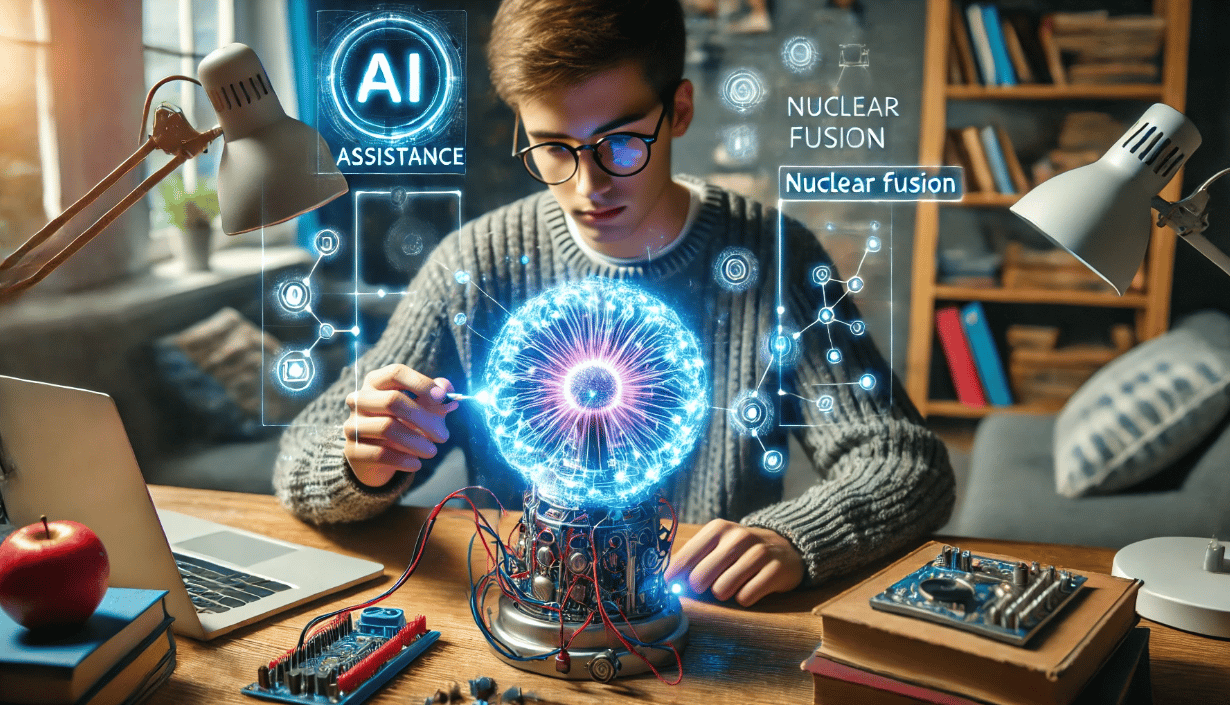
Image Source: ChatGPT-4o
20-Year-Old Builds Nuclear Fusion Prototype at Home with AI Help
Hudhayfa Nazoordeen, a 20-year-old mathematics student at the University of Waterloo, has accomplished something extraordinary: he built a nuclear fusion prototype, roughly the size of a hand, in just four weeks using mostly online-ordered parts. Spending around $2,000, he created the device for fun and to challenge himself, despite having no previous experience in electronics, using the AI assistant Claude for guidance throughout the project.
A Small-Scale Fusion Dream
Nazoordeen’s prototype generates a glowing plasma orb, the same state of matter found in the sun, inside a device that looks more like it belongs in a high-tech laboratory than a student’s bedroom. While his creation cannot produce actual nuclear fusion, it can generate plasma—a key step in the fusion process. Achieving full-scale nuclear fusion would require a much larger budget and a more powerful device.
“I can prove it to myself at least that I can make it. And I think that's a fun part about it,” Nazoordeen told Business Insider. Despite the inherent risks of working with high-voltage equipment, he was determined to complete the project with the help of friends, online resources, and even an AI assistant, Anthropic's Claude.
Building the Prototype: Collaboration and Innovation
Constructing the device was no small feat. Nazoordeen relied on online forums like Fusor.net, sought advice from friends and roommates, and consulted experts to troubleshoot problems. He even used the AI assistant Claude to guide him through some of the more dangerous steps. “I’d ask Claude, ‘Should I do this dumb thing where I put this inside the plug point?’ and it’d say absolutely not,” he recalled. Safety was a top priority; he and his team took precautions like standing back and using sticks to ensure proper grounding during the build.
Most of the parts for the device, including the critical high-voltage transformer, were sourced online from sites like eBay and Amazon. However, when he couldn’t find the right transformer, he called every neon sign store in the city until he found what he needed. After an hour-long Uber ride to pick it up, the device finally worked as intended.
Learning from the Process
Carlos Paz-Soldan, an associate professor of applied physics at Columbia University, commended Nazoordeen’s initiative. “That student is very capable,” he said. While such devices might not have immediate practical applications, they are invaluable for learning. “The students who are doing this learn a lot of relevant skills. They learn about high voltage, they learn about vacuum, and those are the ingredients for fusion systems at larger scale.”
What’s Next for Nazoordeen?
Nazoordeen has set his sights on a more ambitious project: building a device that can achieve actual nuclear fusion. He estimates this next venture will cost around $10,000. Between his studies, a job, and an internship at language model provider Cohere, finding the time will be challenging, but he remains enthusiastic about pushing the boundaries of what’s possible.

